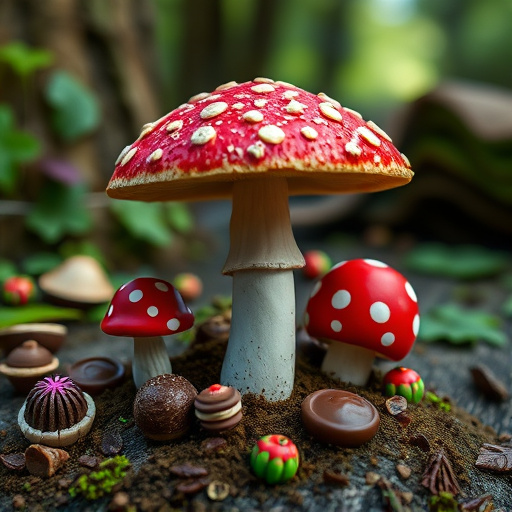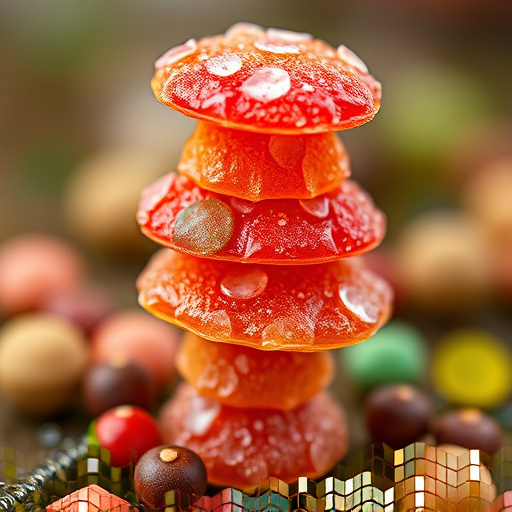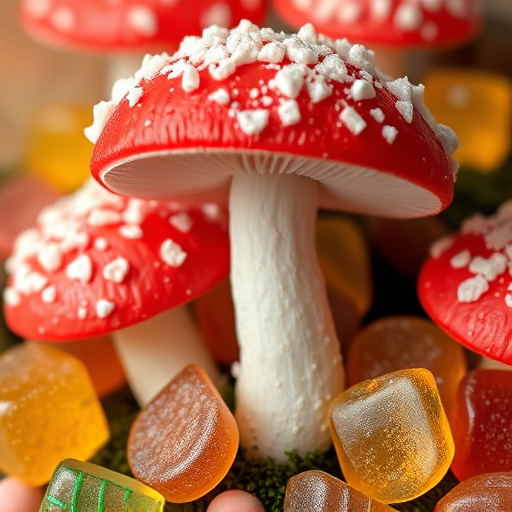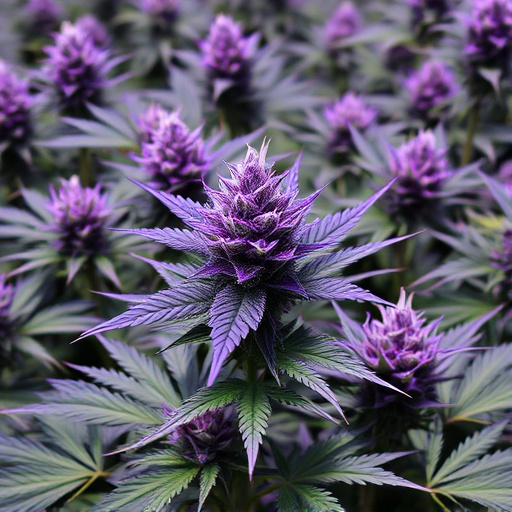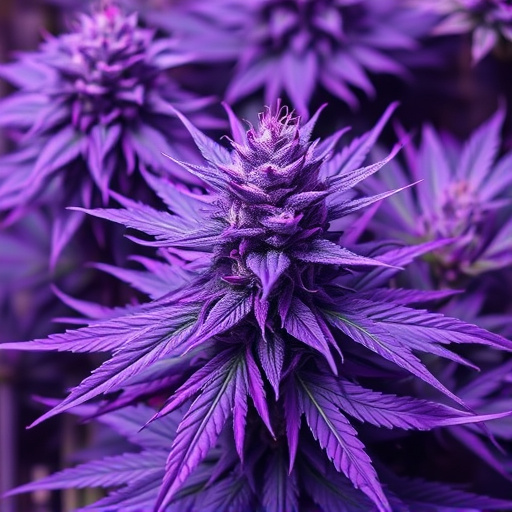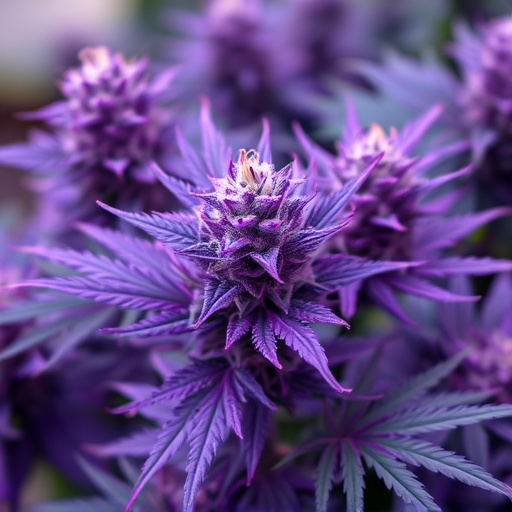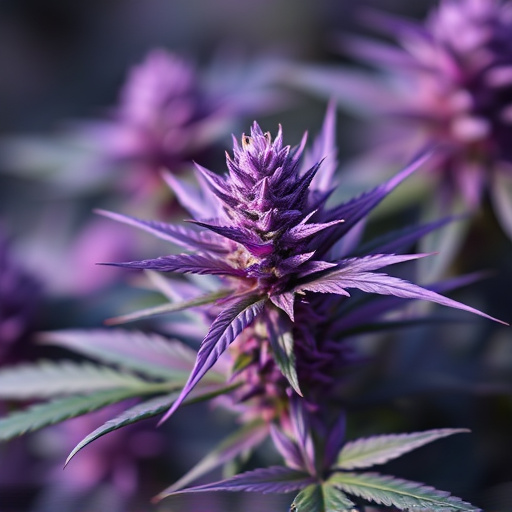The pungent skunk aroma in certain cannabis strains is mainly due to terpenes, organic compounds that also give flowers, fruits, and spices their scents. Myrcene, found in purple strains, is a prominent terpene linked to their characteristic smell. These chemical compounds defend plants from pests and contribute to the diverse aromas across cannabis varieties, including the sought-after skunk notes in purple strains. The complex interplay between terpenes and cannabinoids creates unique sensory experiences, making exploration of different cannabis varieties an engaging journey for enthusiasts.
“Have you ever wondered why some cannabis strains exude a stronger skunk-like aroma than others? This intriguing characteristic is not just about personal preference; it’s rooted in science. We explore the multifaceted reasons behind this sensory experience, delving into the role of terpenes, genetic variations, and cultivation practices. Uncover the secrets behind the pungent profiles of cannabis, with a special focus on the captivating scents of purple strains that have captivated both cultivators and enthusiasts alike.”
- The Role of Terpenes in Skunkiness
- – Explanation of terpenes and their impact on scent
- – How specific terpenes contribute to skunky aromas
The Role of Terpenes in Skunkiness
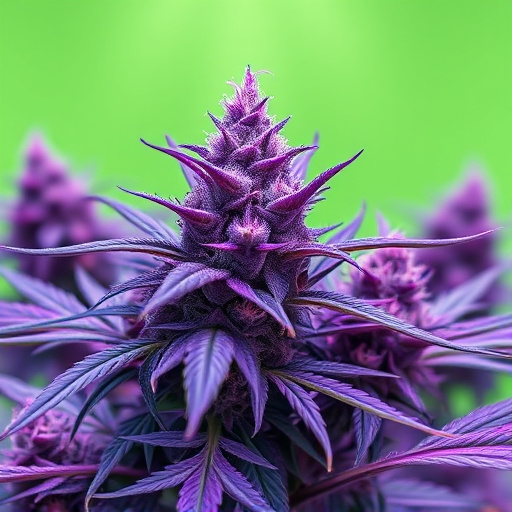
The skunk-like aroma associated with certain cannabis strains is largely attributed to a group of chemical compounds known as terpenes. These organic compounds are responsible for the diverse range of scents and flavors found in both cannabis plants and many other fragrant flowers, fruits, and spices. Among the numerous terpene profiles, myrcene stands out for its strong skunk-like odor and is often linked to the pungent smell of purple strains of cannabis, a favorite among many enthusiasts.
Terpenes not only contribute to the distinctive scent but also play a crucial role in the plant’s natural defenses. They can act as a deterrent against pests and pathogens, protecting the cannabis plant from potential threats. The concentration and types of terpenes can vary significantly between different strains, contributing to the unique sensory experiences associated with each variety, including the skunkier notes enjoyed by many users.
– Explanation of terpenes and their impact on scent

Cannabis plants produce a diverse range of chemical compounds, among which terpenes play a pivotal role in shaping their unique aromas. Terpenes are volatile organic compounds that contribute to the characteristic scents and flavors we associate with different cannabis strains. These aromatic molecules are produced by the resinous glands on the plant, known as trichomes. The scent of skunk, for instance, is primarily attributed to a terpene called myrcene, which is also prevalent in certain cannabis varieties.
Purple strains of cannabis have gained popularity for their distinct aroma profiles, often characterized by earthy, fruity, or floral notes. This sensory experience is largely influenced by the specific terpene makeup of each strain. For example, linalool, a common terpene in lavender, can impart a calming and soothing scent to purple strains, while limonene, found in citrus fruits, adds bright and refreshing notes. The complex interplay between terpenes and other cannabinoids creates a sensory journey that varies from skunky to sweet, making the exploration of different cannabis varieties an intriguing endeavor for enthusiasts.
– How specific terpenes contribute to skunky aromas

The distinctive skunk-like aroma associated with certain cannabis strains is largely attributed to specific terpenes, aromatic compounds that naturally occur in the plant. Terpenes play a crucial role in the overall flavor profile and scent of different cannabis varieties. One such terpene, myrcene, is often linked to the pungent, skunky notes detected in many strains, including some popular purple cannabis strains known for their vibrant hues and unique aromas.
Myrcene is responsible for imparting a earthy, musky scent, which, when combined with other terpenes like limonene and pinene, can create complex and intense aromas. Purple strains, often sought after by cannabis enthusiasts, have been bred to highlight these terpene profiles, resulting in an even more pronounced skunky fragrance. This natural chemistry contributes to the diverse sensory experiences users can expect from different cannabis varieties, making each strain unique in its own right.
In conclusion, the skunkier aroma of certain cannabis strains is primarily attributed to terpene profiles, particularly those with high levels of myrcene and limonene. These terpenes not only influence the scent but also offer potential therapeutic benefits. When exploring the diverse world of cannabis, including sought-after purple strains, understanding terpene chemistry provides insight into both the olfactory experience and the unique properties each strain offers.

